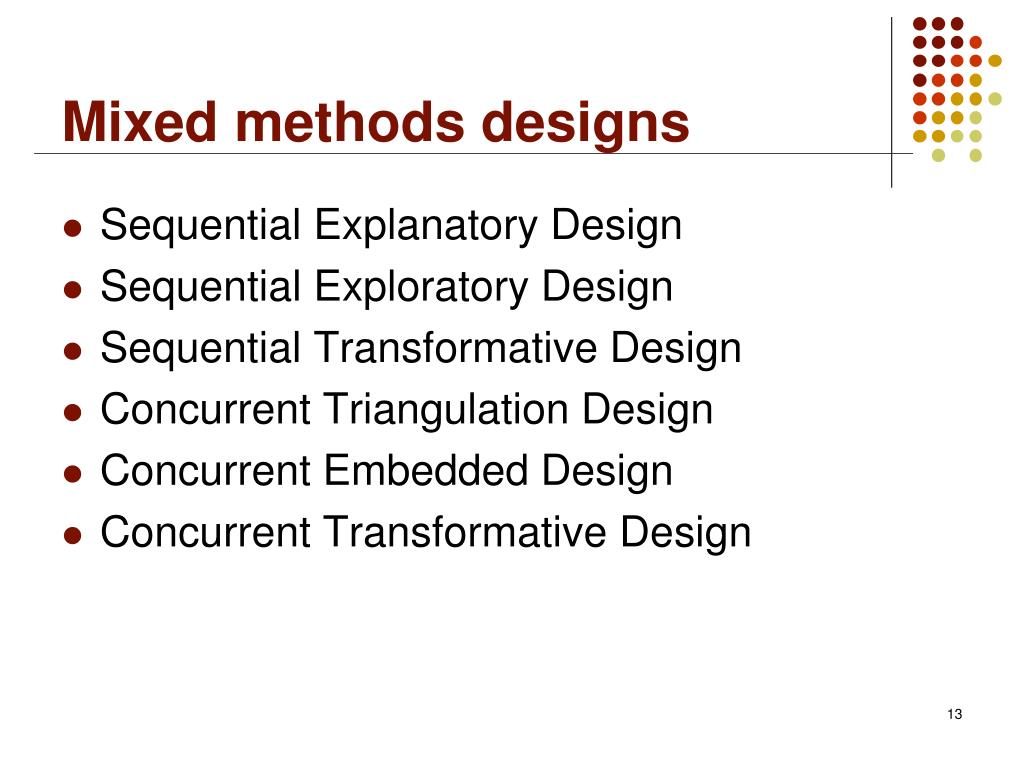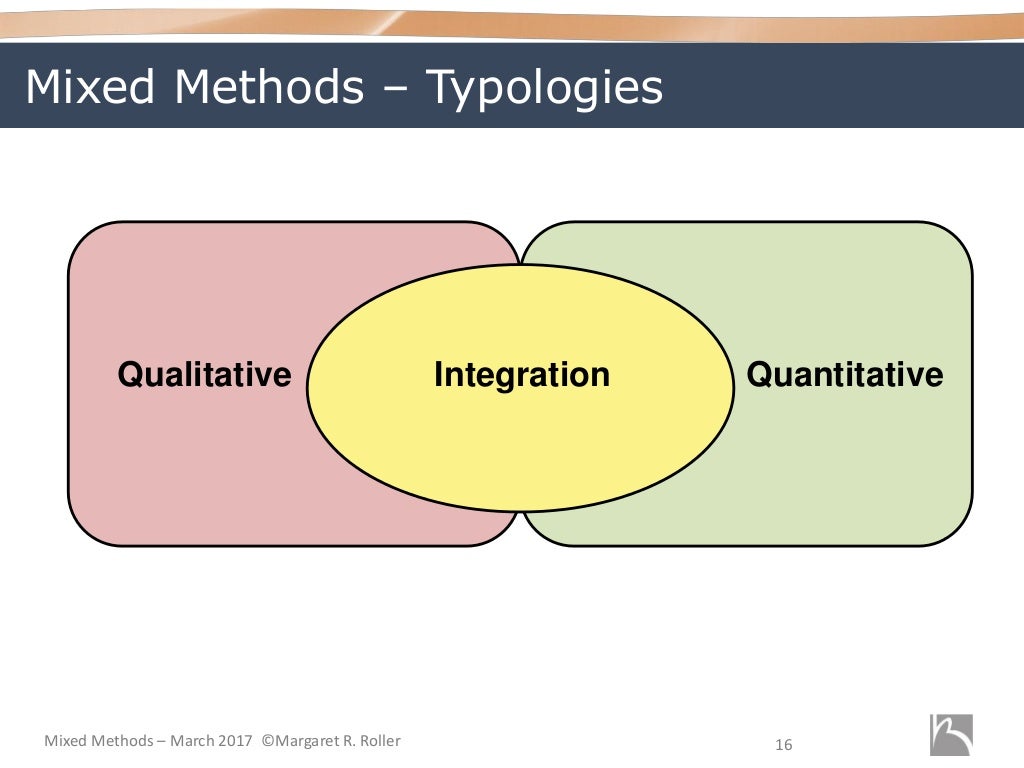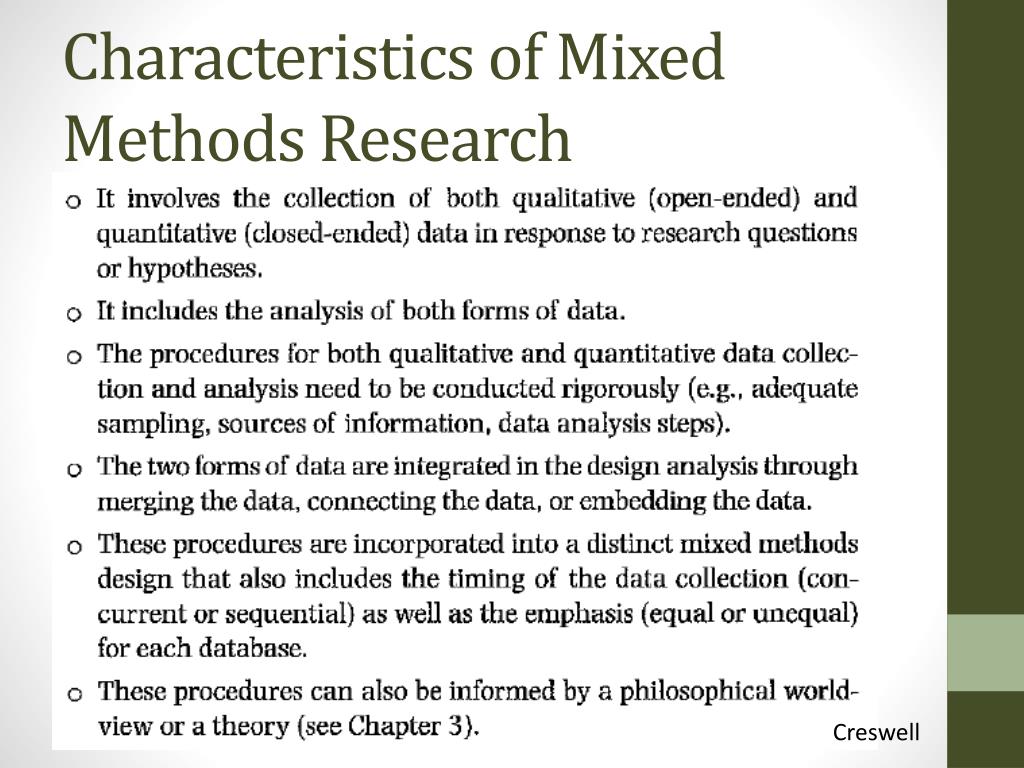Table Of Content

These key considerations should be initially considered in the design of gamified online role-play. Most of their designs presuppose a specific juxtaposition of the qualitative and quantitative component. Note that the last design is a complex type that is required in many mixed methods studies. In addition to a mixing purpose, a mixed methods research study might have an overall “theoretical drive” (Morse and Niehaus 2009). When designing a mixed methods study, it is occasionally helpful to list the theoretical drive in the title of the study design.
Observational Research – Methods and Guide
This design involves collecting qualitative data first, analyzing it, and then collecting and analyzing quantitative data to confirm or refute the qualitative findings. Qualitative data are used to generate hypotheses that are tested using quantitative data. This design involves collecting both qualitative and quantitative data simultaneously, analyzing them separately, and then merging the findings to draw conclusions. The qualitative and quantitative data are given equal weight, and the findings are integrated during the interpretation phase.
JSmol Viewer
MMR challenges the mono-method approaches that are still dominant in the social sciences, and this is both refreshing and important. The first topic is that the approach is moving towards defining a unified MMR methodology. There are differences in opinion as to how this is best achieved, but there is widespread agreement that some kind of common methodological and conceptual foundation of MMR is needed. To this end, some propose a broad methodology that can serve as distinct marker of MMR research.
Theme 5: Educational impact
Designing a conceptual green process model in software development: A mixed method approach - ScienceDirect.com
Designing a conceptual green process model in software development: A mixed method approach.
Posted: Sat, 18 Nov 2023 05:01:24 GMT [source]
Although this distinction is useful in some circumstances, we do not advise to apply it to every mixed methods design. First, Morse and Niehaus contend that the supplemental component can be done “less rigorously” but do not explain which aspects of rigor can be dropped. In addition, the idea of decreased rigor is in conflict with one key theme of the present article, namely that mixed methods designs should always meet the criterion of multiple validities legitimation (Onwuegbuzie and Johnson 2006). The purpose of mixed methods research is to provide a more comprehensive understanding of a research problem than can be obtained through either quantitative or qualitative methods alone. This design involves using mixed methods research to not only understand the research question but also to bring about social change or transformation. The research is conducted in collaboration with stakeholders and aims to generate knowledge that can be used to improve policies, programs, and practices.
In this capacity, they (as well as other philosophers like Vico and Montesquieu) are presented as part of MMR providing a philosophical validation of the project by presenting it as a continuation of ideas that have already been voiced by great thinkers in the past. A nice collection of examples of mixed methods studies can be found in Hesse-Biber (2010), from which the following examples are taken. Observations are a qualitative data collection method that involves systematically watching and recording behavior in a natural setting. Observations can be structured or unstructured and can be used to gather information about behavior, interactions, and context. It depends on the research objectives, but a few methods are often used in mixed methods research designs.
Go.Data as a digital tool for case investigation and contact tracing in the context of COVID-19: a mixed-methods study ... - BMC Public Health
Go.Data as a digital tool for case investigation and contact tracing in the context of COVID-19: a mixed-methods study ....
Posted: Mon, 04 Sep 2023 07:00:00 GMT [source]
In addition, dental problems assigned to the simulated patient could reveal the limitations of teledentistry for participants. To evaluate the gamified online role-play, a triangular design approach was employed, enabling the researchers to compare the research outcomes from different assessment methods. In this research, self-perceived assessments (confidence and awareness) in teledentistry, satisfactions toward gamified online role-play, and learner experience were assessed to assure the quality and feasibility of the gamified online role-play.
For example, a study looking into the impact of technology on learning could use surveys to measure quantitative data on students' use of technology in the classroom. At the same time, interviews or focus groups can provide qualitative data on students' experiences and opinions. The quantitative data retrieved from self-perceived assessment and satisfaction questionnaire were analyzed with the Statistical Package for Social Sciences software (SPSS, version 29, IBM Corp.). The scores from pre- and post-assessments were analyzed using a paired sample t-test to evaluate whether or not the participants would better self-perceive their confidence and awareness in teledentistry after participating in the gamified online role-play.

Data Collection Methods
With an assumed dropout rate of 20%, the number of residents per year (Year 1–3) was set to be 6. Telehealth has gained significant attention from various organization due to its potential to improve healthcare quality and accessibility1. It can be supportive in several aspects in healthcare, including medical and nursing services, to enhance continuous monitoring and follow-up2. Its adoption has increased substantially during the COVID-19 pandemic, aiming to provide convenient healthcare services3.
Self-perceived assessments toward confidence and awareness of teledentistry
New cases of Thais living with end-stage renal disease (ESRD) and receiving hemodialysis reached 39,398 during the period from 2017 to 2019 [10]. Patients receiving hemodialysis include those aged 45 to 64 years (41%), 65 to 74 years (24%), and 75 years and over (20%) [10]. Older persons undergoing dialysis with ESRD represent a major health and social care burden in the context of aging populations [4]. Participants believed that they could realize the necessity of teledentistry from the gamified online role-play. The storytelling or patient conditions allowed learners to understand how teledentistry could have both physical and psychological support for dental patients. During the use of online role-play, the simulated patient can provide formative feedback to participants through facial expressions and tones of voice, enabling participants to observe and learn to adjust their inquiries more accurately.

The quantitative phase was conducted based on pre-experimental research using one-group pretest–posttest design. Participants were requested to complete self-perceived assessments toward confidence and awareness in the use of teledentistry before and after participating in a gamified online role-play. They were also asked to complete a satisfaction questionnaire in using a gamified online role-play for training teledentistry.
The development of a home telehealth model was a collaborative process between patients, caregivers, healthcare professionals from the hemodialysis unit, and the research team. Participants were likely to perceive that they could learn from the gamified online role-play and felt more confident in the use of teledentistry. This educational impact was mostly achieved from the online conversation within the role-play activity, where the participants could improve their communication skills through a video teleconference platform. 2, participants demonstrated a higher level of self-perceived assessments for both self-confidence and awareness in all aspects after participating in the gamified online role-play for teledentistry training. All participants were asked to complete the satisfaction questionnaire after participating in the gamified online role-play, to investigate whether or not they felt satisfied with their learning (Supplementary material 2).
Interaction between the qualitative and quantitative strands occurs as the researcher develops a telehealth model as an intermediate step between the two phases, building on the qualitative results and using them in the subsequent qualitative data collection. The exploratory sequential design in two phases which has been used in this study is set out below, and the scope of the research is presented (see Fig. 2). We agree with Greene (2015) that mixed methods research can be integrated at the levels of method, methodology, and paradigm. Therefore, equal-status mixed methods research (that we often advocate) is also called “interactive mixed methods research”.
The blood chemistry analyses included Blood Uria Nitrogen (BUN), Creatinine (Cr), Hemoglobin (Hb), Hematocrit (Hct), Albumin (Alb), and Potassium (K) while the adequacy of hemodialysis measurement included weekly Kt/V and Normalized protein catabolic rate (nPCR). The 9-item Thai Health Status Assessment Instrument is a valid and reliable quality of life measure for Thai renal replacement therapy patients. Its convergent and divergent validity have been demonstrated using the SF-36 as a concurrent measure. Its test–retest reliability is satisfactory as the inter-class correlation coefficients are 0.79 (physical health score) and 0.78 (mental health score) [25, 29].
Typological and interactive approaches to mixed methods research have been presented as mutually exclusive alternatives. The interactive approach of Maxwell is a very powerful tool for conducting research, yet this approach is not specific to mixed methods research. Maxwell’s interactive approach emphasizes that the researcher should keep and monitor a close fit between the five components of research design.
No comments:
Post a Comment